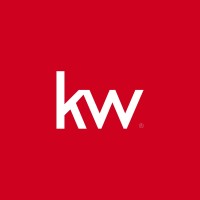Company Cyber Security Posture
NANA
NA Company Details
NA
NA
NA
NA
NA
NA
Scan still pending
NA
NA
Between 200 and 800
This score is AI-generated and less favored by cyber insurers, who prefer the TPRM score.
 NA Global Score
NA Global Score.png)

Company Scoring based on AI Models
| Model Name | Date | Description | Current Score Difference | Score |
|---|---|---|---|---|
| AVERAGE-Industry | 03-12-2025 | This score represents the average cybersecurity rating of companies already scanned within the same industry. It provides a benchmark to compare an individual company's security posture against its industry peers. | N/A | Between 200 and 800 |
Company Cyber Security News & History
| Entity | Type | Severity | Impact | Seen | Url ID | Details | View |
|---|
Company Subsidiaries

NA
Access Data Using Our API

Get company history
.png)
NA Cyber Security News
Simon Property Group (SPG): Company Profile, Stock Price, News, Rankings
Simon Property Group · Updated:6/2/2025; Country:U.S. · Updated:6/2/2025; Country:U.S. · Headquarters: · Industry:Real estate · CEO:David E. Simon; Website: ...
SIMON PROPERTY GROUP INC /DE/ SEC 10-K Report
SIMON PROPERTY GROUP INC /DE/ SEC 10-K Report · Operating Income: $3,092.8 million, reflecting strong operational performance and improved core ...
Simon Property Group Crosses Above 5% Yield Territory
Simon Property Group is an S&P 500 company, giving it special status as one of the large-cap companies making up the S&P 500 Index. 10 Stocks ...
Simon Property Group misses quarterly funds from operations estimates
Commercial real estate investment trust Simon Property Group missed market expectations for third-quarter funds from operations (FFO) on ...
WARNING: Hackers Target Salesforce Accounts In Sophisticated Data Extortion Attacks
Google's Threat Intelligence Group (GTIG) has uncovered a series of cyberattacks targeting Salesforce environments using social engineering ...
Simon Property Group Stock Outlook: Is Wall Street Bullish Or Bearish?
Despite Simon Property Group's underperformance relative to the SPX over the past year, Wall Street analysts maintain a moderately ...
Indianapolis Cybersecurity Job Market: Trends and Growth Areas for 2024
The cybersecurity job market in Indianapolis is projected to boom in 2024 with over 20,000 job openings statewide. High-demand roles include ...
Radiology practice SimonMed Imaging suffers apparent ransomware attack
SimonMed Imaging recently suffered an apparent ransomware attack, the Scottsdale, Arizona, radiology practice confirmed Thursday.
Widow of mall mogul buys 2nd Palm Beach mansion for $51M (Photos)
A firm associated with Bren Simon, a real estate investor in Colorado and widow of Simon Property Group co-founder Mel Simon, purchased an ...

NA Similar Companies

Anywhere Real Estate Inc.
Anywhere Real Estate Inc. (NYSE: HOUS) is moving the real estate industry to what's next. A leader of integrated residential real estate services, Anywhere includes franchise, brokerage, relocation, and title and settlement businesses, as well as mortgage and title insurance underwriter joint ventur

Forsythe Appraisals
Forsythe Appraisals is part of First American Mortgage Solutions. Established in 1940, Forsythe Appraisals is the oldest and largest staff appraisal company in the United States. With branch offices covering more than 40 metropolitan markets around the country, Forsythe Appraisals’ unique national

Keller Williams Colombia
Hemos creado este canal de comunicación con el fin de llevar los sistemas, modelos y valores de nuestra empresa para empezar a cambiar vidas. Colombia carece de un sistema formal de hacer negocios de bienes raíces, por eso, nuestro objetivo es ayudar a crear un ambiente de profesionalismo, bas

Keller Williams Realty, Inc.
Austin, Texas-based Keller Williams, the world’s largest real estate franchise by agent count, has more than 1,100 offices and 176,000 agents. The franchise is also No. 1 in units and sales volume in the United States. Since 1983, the company has cultivated an agent-centric, technology-driven, and

Lopes Consultoria de Imóveis
A GARANTIA DE SER LOPES A Lopes é a maior empresa de soluções integradas de intermediação, consultoria e promoção de financiamentos de imóveis do Brasil. Está presente em 10 estados - São Paulo, Rio de Janeiro, Minas Gerais, Espírito Santo, Rio Grande do Sul, Paraná, Santa Catarina, Bahia, Per

Weichert, Realtors
Since 1969, Weichert Realtors has grown from a single office into one of the nation's leading providers of real estate and related services. Their success is rooted in their customer-first philosophy, making every organizational decision based on building trust and sustaining amazing experiences at

Frequently Asked Questions
Explore insights on cybersecurity incidents, risk posture, and Rankiteo's assessments.
NA CyberSecurity History Information
How many cyber incidents has NA faced?
Total Incidents: According to Rankiteo, NA has faced 0 incidents in the past.
What types of cybersecurity incidents have occurred at NA?
Incident Types: The types of cybersecurity incidents that have occurred include .
Additional Questions
What Do We Measure?
















Every week, Rankiteo analyzes billions of signals to give organizations a sharper, faster view of emerging risks. With deeper, more actionable intelligence at their fingertips, security teams can outpace threat actors, respond instantly to Zero-Day attacks, and dramatically shrink their risk exposure window.
These are some of the factors we use to calculate the overall score:
Identify exposed access points, detect misconfigured SSL certificates, and uncover vulnerabilities across the network infrastructure.
Gain visibility into the software components used within an organization to detect vulnerabilities, manage risk, and ensure supply chain security.
Monitor and manage all IT assets and their configurations to ensure accurate, real-time visibility across the company's technology environment.
Leverage real-time insights on active threats, malware campaigns, and emerging vulnerabilities to proactively defend against evolving cyberattacks.




